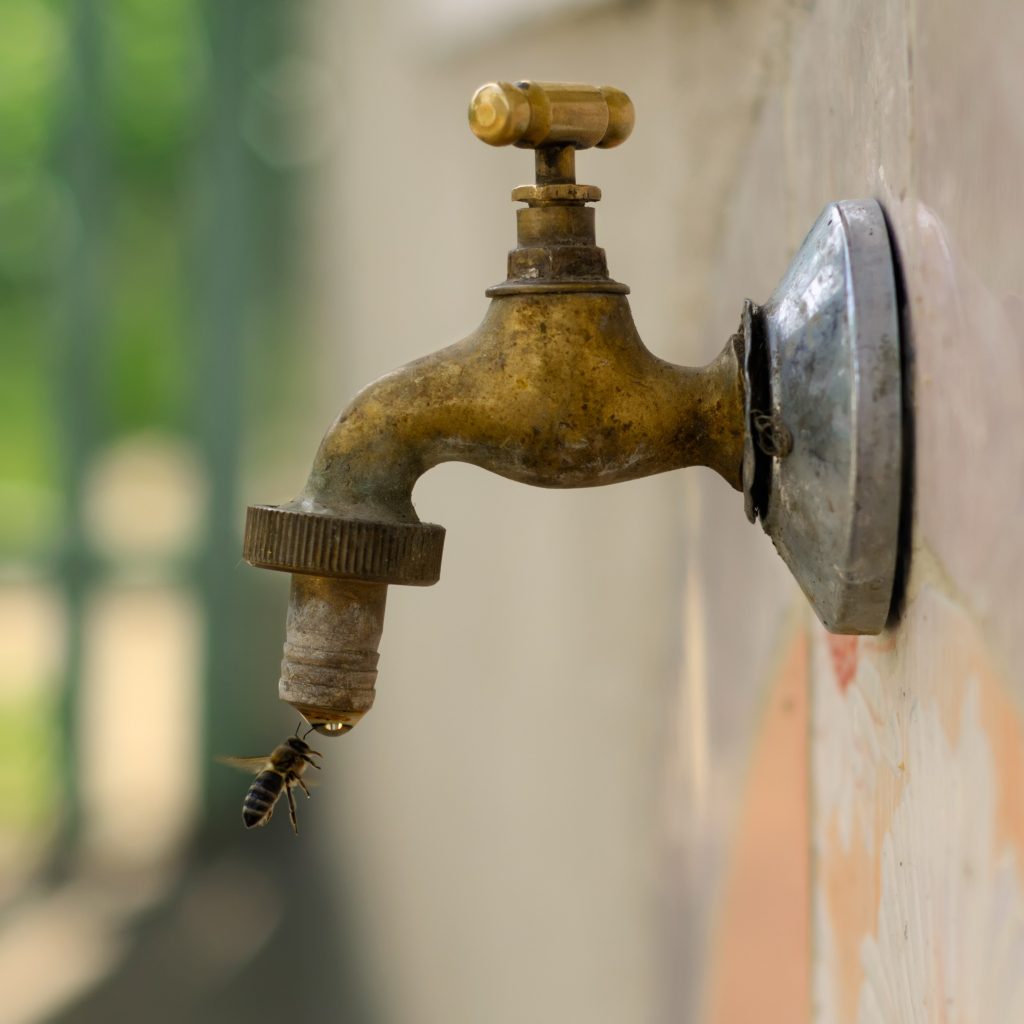Hydrated Bees Are Happy Bees

All living things require water, as well as food, and shelter. In most cases, insects can get all the water they need from their food. An example is a fuzzy and fat caterpillar whose favorite meal is leaves, and those are mostly water. However, pollen doesn’t have much moisture and certainly not enough to provide bees with all they need. Nectar, which is also on the bee’s consumption list, has some moisture but not enough. So, here is the mystery solved! People find bees in the pool, ponds, pet water bowls, and any source of water they can find. Bees can’t swim, so sometimes you find floating bees in the pool – some people even rescue the bees that are still moving in the pool!
Warm Weather Means Finding Water
Honeybees start searching for a steady water source when the weather warms up. It may surprise you to know how quickly bees learn where a water source is and continue to return to it regularly. Water sources are also shared between hives since they are away from the Queen, and it is a non-competitive activity. Bees communicate to other bees in the hive where the water source is by dancing.
If you have bees near water where they are unwanted, start early and provide them a water source before the warmer weather begins. Once they find the water source, it is difficult to change it. However, if you jump on it, they will use the intentional source intended instead of the pool or another area you would like them to stay away from.
The Needs of Bees
There are many different approaches to putting together a water source early so bees can learn where it is and do their dance to direct other bees. It is essential that bees can stand while drinking because, as mentioned above, they cannot swim. A shallow vessel, such as the bottom of a plant pot, works well because it can hold water and usually evaporates fast enough that mosquitoes aren’t interested. Using corks or pebbles gives bees somewhere to stand and slurp their share. If you are on a pond, this is an excellent source for bees, but some mosquito treatments can cause harm to bees, so use Bacillus thuringiensis israelensis so no other organisms are harmed in the process.
Contrary to what one might think, bees benefit from slightly dirty water. Dirtier water provides bees with some needed nutrients supplied by decaying organic matter. Bees are drawn to water with sodium through olfactory senses! So, you could provide a water source with some table salt and have some happy and hydrated bees in your neighborhood!
The highest success in providing bees a water source is allowing some algae and leaves to stay put in the water and don’t place it near smelly plants!
Plants Do Provide Some Water for Bees
Although nectar and pollen are not complete water sources for bees, plants can serve their purpose in getting our striped friends hydrated. Plants and leaves with dew on them can provide several hours for bees to sit and drink, especially those with tiny hairs. So, one can easily create a naturally welcoming water source for bees by planting some Lamb’s Ear and spraying it with a hose.
If you have the opportunity to observe bees as they drink, it is fascinating. Their tiny abdomens appear to pulsate as they create suction to suck up the water. It is like people drinking through a straw. The bonus is that due to the distance of the water source from the hive, bees are rarely aggressive at the water source, so it is a safe time to get a little closer if interested!
These quick-learning students work tirelessly to ensure their hive has everything it needs. The fact that bees go out and source water before it gets too hot, using their olfactory senses to find the best source, is nothing short of astonishing. Bees will search for different water sources when pollen is plentiful and scarce because their nutrient needs are different when less pollen is available. Then, the rest of the hive finds out where the water source is from a waggle dance!
Happy bees must get the water they need, so if you find bees in a water source where you do not want them, try to provide them with another one. If you have a hive on or near your home that concerns you, find a reputable bee removal company, like D-Tek, and let the professionals come and remove it while keeping you, your family, and the bees safe as the hive is relocated off the property. So, if you are in San Diego or surrounding areas, find a quality technician worth every cent because the job is done well, safely, thoroughly, and without d
